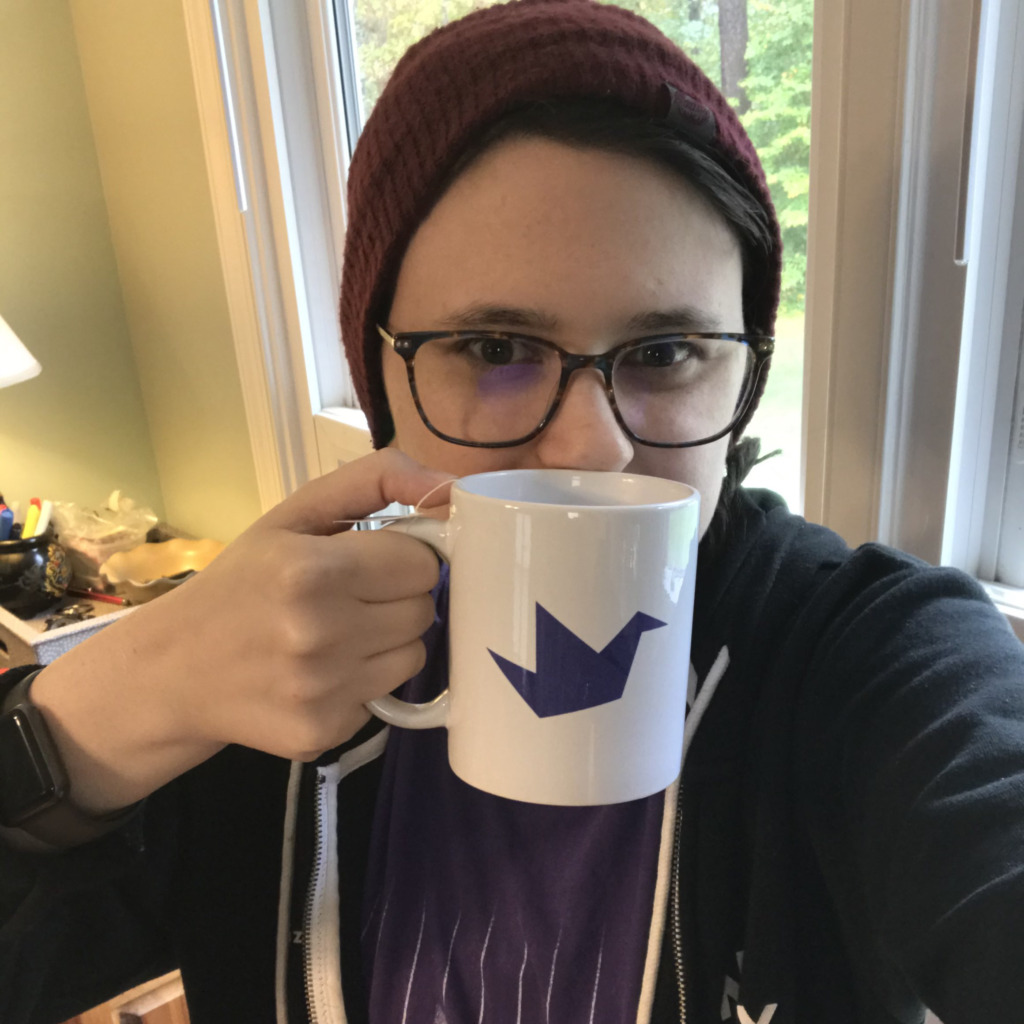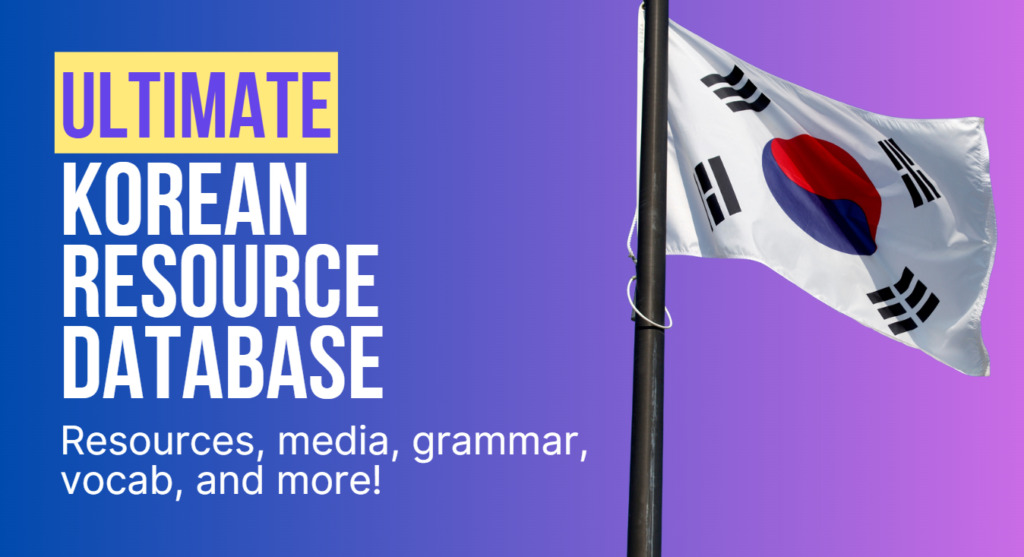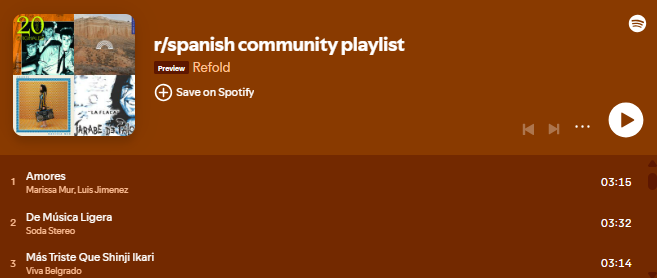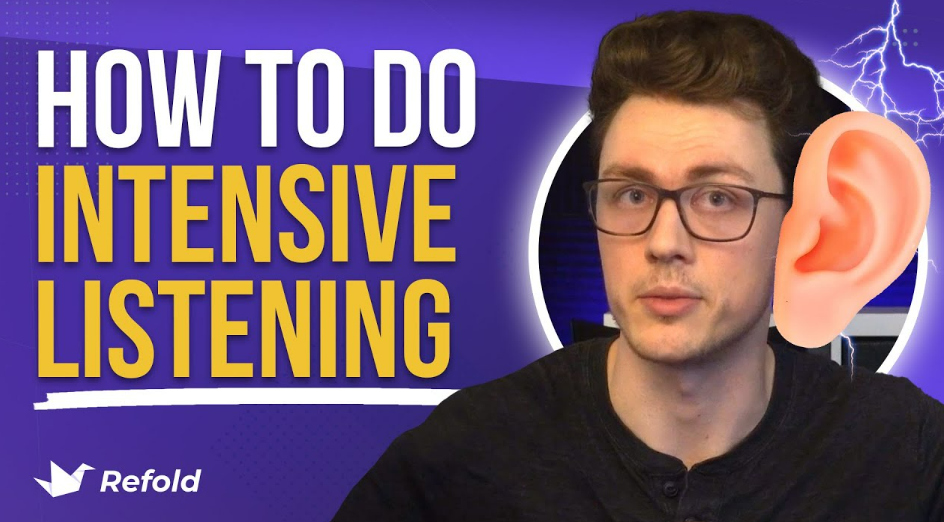That is one of the most commonly asked questions in all of language learning.
People want to know what they’re getting in to!
There are a few different ways to think about “how long it takes to learn a language.” But by far the most accurate and useful measurement is “Total hours of effort to reach fluency.”
While there are issues with even that simple statement (what is fluency? What counts as an hour of effort?), it’s still a very useful number to know.
In this post, I’m going to dive into the nuance of these numbers and how to figure out what they mean for you and your target language. So let’s jump into it.
The language really matters
The first hurdle we face when determining the number of hours it takes to learn a language, is that different languages take different amounts of time for different people.
Language distance is the most important factor. Basically, how different is your target language from your native language (or another language you already speak)?
If you speak Spanish as your native language, Italian is much easier than Dutch. Italian and Spanish share a massive amount of vocabulary, grammar and even sounds. But Spanish and Dutch only have a few things in common.
So, we separate languages (roughly) into 4 different groups, depending on how different they are to your native language. Since Refold is a primarily English speaking company, we use English as the native language for these calculations. But if you speak a different language, your version of this chart will look very different.
Similar languages share many things in common. They have a common linguistic ancestor and share a decent amount of vocabulary and may have similar sentence structures.
Distant languages have essentially nothing in common. Maybe a few borrowed words (usually due to English’s massive influence in the world), but nothing else. Distant languages also have some things that are very different (such as tones), making them take more time to learn.
Cousin languages are usually a very small group of languages that are very closely related. These languages share over 50% (often way more) of their vocabulary and have very similar sentence structures and grammar features.
For example, the Romance languages (Spanish, Catalan, Italian, French, Portuguese, etc) or the Slavic languages (Russian, Ukrainian, Polish, Czech, Slovak, etc).
All other languages fall into a middle category. They’re not particularly distant or similar to your native language and require roughly the same amount of time to learn.
Example chart of language distances for English as a native language. This list is far from exhaustive, as there are over 7000 languages in the world.
| Cousin languages | Similar languages | All other languages | Distant languages |
|---|---|---|---|
| Scots | Spanish | Russian | Japanese |
| Frisian | French | Hindi | Mandarin |
| German | Indonesian | Korean | |
| Dutch | Greek | (Any) Arabic | |
| Cherokee | |||
| etc. |
And for a native Spanish speaker, the chart might look a bit like this:
| Cousin languages | Similar languages | All other languages | Distant languages |
|---|---|---|---|
| Italian | English | Russian | Japanese |
| Portuguese | Dutch | Hindi | Mandarin |
| French | German | Indonesian | Korean |
| Catalan | Greek | (Any) Arabic | |
| Cherokee | |||
| etc. |
Please keep in mind that “language distance” isn’t meant to be a perfect, objective measurement. All language pairs will have slightly different nuance to them. But, the language groupings are required if we want to figure out how long it will take.
What’s your experience?
The other major factor in learning speed is you! Not only your native language, but how much experience you have with language learning. Have you successfully learned other languages in the past? Did you try to learn your current target language a decade ago?
All of these factors are important to consider!
If you’ve already learned two other foreign languages as an adult, you’re going to have a much easier time with a third one, even if it’s a very distant language. You already understand your personal learning process and have experienced a lot of the pitfalls.
But if this is your first foreign language, you’ll be figuring all that out, while also learning the language.
This is the reason why, I recommend that people learn a more similar language first, as long as they plan on learning more eventually. I see some form of question like this all the time:
“Hi! I’m new to language learning. I know that I want to learn Spanish and Japanese. Which one should I learn first as a native English speaker?”
Assuming this person truly wants to learn both, starting with Spanish will allow them to make quicker progress and figure out their own learning style and process. Then, when they’re ready to focus on Japanese, they’re already a seasoned language learner.
The other important factor here is if you have experience learning a language related to your current target language. An English speaker who’s fluent in Spanish will have a much easier time learning Italian than a monolingual English speaker (much like we discussed in the previous section).
What are your goals?
The final, critical factor that I need to mention before getting to the actual hours estimations is your personal goal in the language.
If you want to become super fluent and move to the country and practically leave behind your native language, you’re looking at a very different time commitment than someone who wants to chat with market vendors on their vacation and know enough to get around.
There’s nothing wrong with either of those goals, by the way! Each person has very different reasons to learn a language.
In our hour estimations, we assume that the goal is what we call “Functional Fluency.” Which we define as “being able to comfortably live your life in the target language.”
That means you can understand media pretty easily, have conversations on topics you know something about, and can communicate without issue. You will still sound like a foreigner and make plenty of mistakes.
If your goal is higher or lower than this, keep that in mind. For someone who just wants to make comfortable small talk, around 50% of the functional fluency number is probably more accurate. If you want to go to university and immigrate to a country that uses that language, maybe multiply the number by 1.5.
Total hour estimates
Alright, here’s the part you’ve been waiting for. If you scrolled down to this section without reading above, you’re missing out on valuable nuance that will help you understand these numbers.
And one final reminder: These numbers are meant to be estimates to help you plan your language learning journey.
How long does it take to reach functional fluency in a…
- Cousin language: 800 hours
- Similar language: 1350 hours
- Other language: 1800 hours
- Distant language: 3600 hours
Those are big numbers! And they ignore a lot of the nuance of where you will be after, say, 500 hours. I much prefer this chart, which breaks down the estimates into roughly how long it takes to get through each “Refold Phase1.”
The first number is the amount of hours it takes to get through just that phase. The second number is the estimate of how many total hours you’ll have spent with the language at the end of that phase.
| Phase | Similar | Similar Total | Other | Other Total | Distant | Distant Total |
|---|---|---|---|---|---|---|
| 1: Foundations | 75 | 75 | 100 | 100 | 200 | 200 |
| 2: Reading | 375 | 450 | 500 | 600 | 1000 | 1200 |
| 3: Listening | 300 | 750 | 400 | 1000 | 800 | 2000 |
| 4: Speaking | 150 | 900 | 200 | 1200 | 400 | 2400 |
| 5: Writing | 225 | 1125 | 300 | 1500 | 600 | 3000 |
| 6: Fluency | 225 | 1350 | 300 | 1800 | 600 | 3600 |
| 7: And beyond | ??? | ??? | ??? | ??? | ??? | ??? |
To get a rough approximation for “cousin languages,” multiply the hours for a similar language by .6
The “And beyond” phase doesn’t have numbers since it goes on forever! After you reach functional fluency, unless you totally drop the language forever, you’ll continuously learn more for the rest of your life.
Let’s look at a few examples.
Let’s say you’re a native English speaker learning German, that’d be a similar language. You don’t actually want to reach functional fluency, you just want to have basic conversations. So your goal is to finish the speaking phase (which roughly equates to “small talk fluency.”) Your goal is to hit 900 hours in German.
If you’re a native English speaker learning Japanese, and your goal is to go beyond functional fluency, you’re looking at aiming for closer to 4000 hours (and then continuing from there).
But, don’t think about that big, final number!
Reaching the “Fun Threshold”
Instead, you should focus on reaching the “fun threshold.” This is the point where learning stops feeling so much like learning. You’re good enough at the language that immersion and constant learning become fun, something you look forward to doing.
The fun threshold comes at around 20% of the functional fluency estimate.
Don’t think about how it’ll take you 1800 hours to become fluent in Russian. Focus on reaching 360 hours.
How long does it take to reach the fun threshold in a…
- Cousin language: 160 hours
- Similar language: 270 hours
- Other language: 360 hours
- Distant language: 720 hours
If you were to learn for 2 hours per day (which is a lot, but doable if you incorporate it into your day well), the fun threshold will take you:
- about 3 months for a Cousin language
- about 4.5 months for a Similar language
- about 6 months for an Other language
- about 12 months for a Distant language
Once you can have fun in a language, you’re never going to want to stop learning!
Slow and steady wins the race
Language learning is not a sprint. You can’t jam 2000 hours into a few months. Not only are there only 24 hours in a day, but your brain can’t absorb more than a few hours of a new language per day. We don’t know if there’s really a limit, but learners start to lose effectiveness beyond 5 hours per day2.
It’s a much better approach to go slow and steady. Focus on creating a language learning routine that you can maintain every day, without fail.
The most common reason people fail to learn a language is burnout. Their first week or month is incredibly strong… but then it becomes too much for them and falls apart.
Start with 45 minutes per day. Then when that’s solid, increase it to an hour. And then an hour and a half. And in no time, you’ll be learning for almost 2 hours every day!
How did we come up with these numbers?
Now, where did these numbers from? Did we make them up? What are they based in?
The most commonly cited hours estimation for language learning comes from the Foreign Service Institute, which teaches English native speakers foreign languages so they can work in foreign affairs. They have a lot of experience teaching languages to people!
They split languages into 4 categories, based on their difficulty (but they’re a bit different from ours) and give an estimate for how long it takes a learner to reach Level 3 on the ILR scale.
They make their estimates in terms of number of weeks and classroom hours required. This is because their language courses are fairly standardized and the people they teach are learning full time.
The time estimates from the FSI are very frequently incorrectly cited since the hours they list on their website are only classroom hours. But students are expected to also do nearly as much self study every week.
A typical week is 23 hours per week in class and 17 hours of self-study3. That means these students are learning for 40 hours per week! A full time job.
Here are their hours estimates for getting to Level 3 on the ILR scale for an English native speaker:
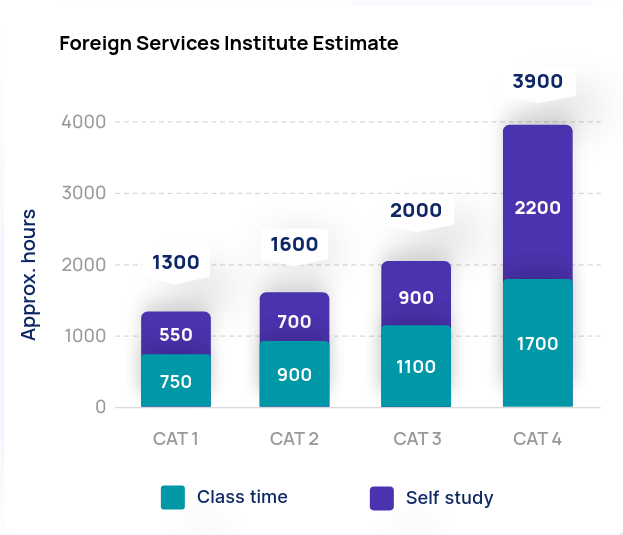
Category 1 languages are similar to English, 2 are a bit further away, or are an “easy” Category 3 language, Category 3 is the “catch all” for everything else, and Category 4 languages are the super hard languages that take English speakers a very long time to learn.
These estimates from the Foreign Services Institute are very good and we used them for quite a while whenever we talked about time to learn a language.
However, they don’t match up perfectly with immersion learning or the Refold method.
The primary difference is that immersion learning works a little bit different. In an FSI course, nearly 60% of your time with the language is in a classroom. This is great for explicitly learning grammar rules and following a textbook, but it’s not the same as focused, interactive immersion time.
The ways that our brains acquire languages from immersion learning is very different from classroom learning. People in our community tend to progress a little faster in the more difficult languages (what they call Category 3 and 4 and what we call Distant languages).
The other main difference is that we group languages differently. We add the easiest category of “Cousin languages” (the FSI doesn’t have this, since English pretty much doesn’t have any) and we shuffle some of the category 2 languages around. The experience of learning German in a classroom, for example, makes it feel harder than it is for someone learning through immersion.
Our hours estimates are based on the Foreign Service Institute’s decades of experience, but modified to better match the experience of our immersion learning community of over 70,000 learners.
And the “per phase” breakdown of hours is based on a few people’s experience and our best estimations. When we created the 7 Phase system from the original 4 Stage one, we looked at where people in our community were spending the most amount of time and estimating from there.
As we learn more about the time it takes to learn a language with the Refold App, we will update these numbers if they change! Effectively studying immersion learning on such a large scale is currently impossible, but we want to change that with our app.
If you want to be a part of the future of immersion learning, download the app and start tracking your time today!
- The 7 Phases are our new model for the different phases of learning a language. They’re very similar to the original 4 Stages in the first version of the Refold Roadmap. But but Stages 2, 3 and 4 were converted into 2 phases each, giving us 7 rather than 4. To watch a video explaining the 7 Phases, click here. If you’d prefer to read about them, they’re in our free Learning Guides. ↩︎
- This is based purely on anecdotal evidence from learners in our community. We’d love to study it more in detail! If you want to help us do that, start using the Refold App to track your time! ↩︎
- https://www.state.gov/foreign-service-institute/foreign-language-training, FSI’s Experience with Language Learning ↩︎



